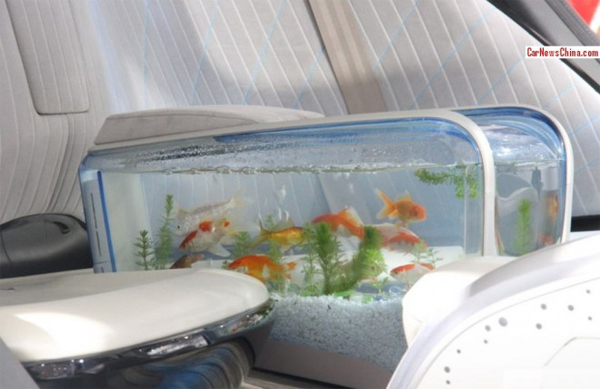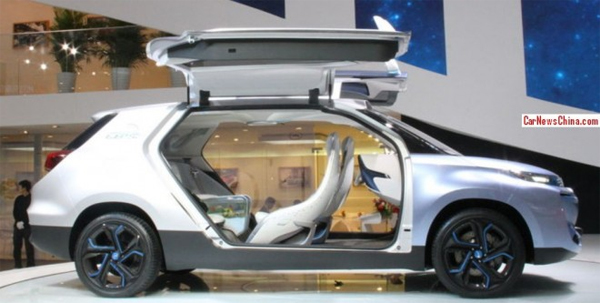The well-being of goldfish is of utmost importance for the survival of the human kind, so a demonstration of how safe a fish can be inside a self-driving car should be edifying.
WitStar is a self-driving vehicle made by Guangzhou Auto, a Chinese car manufacturer. Even if driverless cars will become sooner or later the norm in Europe and the US, penetrating the Chinese market is very difficult. In this context, Chinese automakers are somehow forced to take the matter in their own hands and catch-up with the rest of the world’s latest advancements. I’m not trying to say that China isn’t technologically-advanced enough, on the contrary, many companies from this country exceeded any and all expectations with certain products. A Chinese self-driving car like WitStar, while not very visually appealing, can determine the progress of other automakers.

When Guangzhou Auto designed the WitStar concept, they answered an important question: “Do the passengers still need to face forward in a driverless car?” Obviously, the answer is no. The front seats can swivel around so that everyone can enjoy the fish tank. Needless to say, rotating the seats is only possible when the car is stationary.

Let’s get back to our sheep fish, though! Most people still look at driverless cars with a lot of skepticism, as there are many factors such a vehicle needs to consider when being in motion: traffic lights, street signs, pedestrians, and most importantly, other cars. Some self-driving cars rely on cameras and all sorts of sensors to analyze the surrounding environment, while others, such as Nissan’s next generation of driverless vehicles, make use of 3D laser scanners.
The autonomous driving system of WitStar employs cameras and computers to create a 3D image of the surroundings. As mentioned before, the fish tank does not play only an aesthetic role, as it’s also meant to prove how safe this car really is. Skeptics claim that the developers of such self-driving vehicles should place their kids in one of these, if they really want to prove that these are safe.
In other news, Volvo has a big surprise for us in 2017, as the Swedish automaker plans to run a test on 37 miles of roads in and outside of Gothenburg using 100 self-driving cars. A lot can happen in 3 years, but this is still a very daring project.
If you liked this post, please check Nissan’s self-driving cars that will rely on 3D laser scanners, and the driverless cars tested in UK this year.










